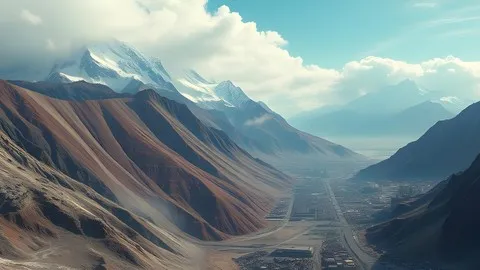Landslide Risk Mapping Using Remote Sensing And Gee
Published 8/2025
MP4 | Video: h264, 1920x1080 | Audio: AAC, 44.1 KHz
Language: English | Size: 509.91 MB | Duration: 0h 56m
Published 8/2025
MP4 | Video: h264, 1920x1080 | Audio: AAC, 44.1 KHz
Language: English | Size: 509.91 MB | Duration: 0h 56m
Landslide Risk Mapping Using Remote Sensing and Google Earth Engine
What you'll learn
Understand the fundamentals of remote sensing and its applications in natural hazard assessment.
Learn how to process and analyze DEM, slope, aspect, and rainfall data using Google Earth Engine.
Develop skills to create landslide risk maps by integrating multiple environmental factors.
Gain hands-on experience in exporting and visualizing geospatial risk data for decision-making and disaster management.
Requirements
No prior experience with Google Earth Engine is required — the course will guide you step-by-step.
Description
Landslides pose significant threats to communities, infrastructure, and ecosystems, making effective risk mapping essential for mitigation and planning. This course offers a comprehensive introduction to remote sensing technologies and their practical application in landslide risk assessment. Students will begin by understanding the fundamentals of remote sensing, learning how satellite imagery and digital elevation models (DEMs) provide vital terrain information. The course covers risk mapping concepts and demonstrates how environmental factors such as elevation, slope, aspect, and rainfall contribute to landslide susceptibility.Using Google Earth Engine, a powerful cloud-based geospatial processing platform, learners will gain hands-on experience in analyzing vast datasets efficiently. They will learn how to integrate terrain data (such as SRTM DEM), rainfall data (e.g., CHIRPS), and land cover information to build multi-factor landslide risk models. This includes normalizing data layers, applying threshold values, and classifying areas into low, medium, and high-risk zones.The course emphasizes practical implementation with step-by-step guidance on coding workflows in GEE, allowing students to generate maps, visualize risk areas, and export their results for further use. Whether for academic research, disaster management, or environmental consultancy, participants will acquire valuable skills to perform spatial risk analysis.By the end of this course, students will be confident in applying remote sensing data and GEE tools to real-world landslide risk mapping challenges, supporting more informed decision-making and contributing to community safety and resilience.
Overview
Section 1: Introduction
Lecture 1 Lecture 1: Fundamentals of Remote Sensing
Lecture 2 Lecture 2: Remote Sensing Risk Mapping
Lecture 3 Lecture 3: Introduction to Google Earth Engine (GEE)
Lecture 4 Getting Started with the Google Earth Engine Interface
Lecture 5 Lecture 4: Implementation of Landslide Risk Mapping in GEE
Students, researchers and professionals in agriculture, environmental science, geography, or remote sensing looking to apply satellite data in real-world scenarios.



